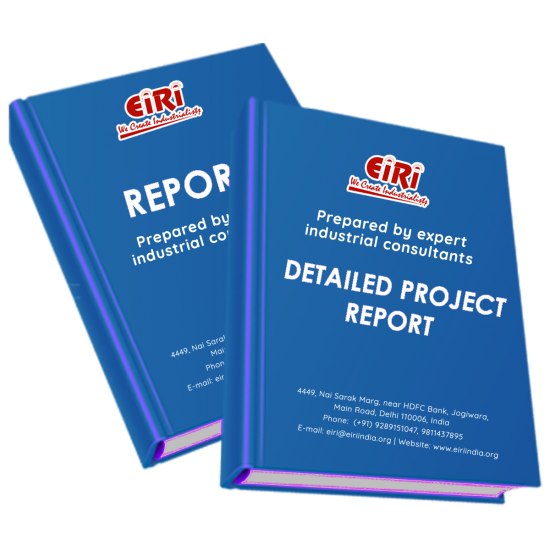Description
INTRODUCTION
STARCH INDUSTRY IN INDIA
BYPRODUCTS FROM MAIZE
1.0 STARCHES
1.1 NATURAL STARCHES
1.1 NATURAL STARCHES
1.3 CEREAL STARCHES
MAIZE SCENARIO IN INDIA
SPECIFICATION OF STARCH
MAIZE STARCH SPECIFICATION
2.2USES OF STARCH:
A) TEXTILE INDUSTRY:
B) FOOD INDUSTRY:
C) PAPER INDUSTRY:
D) PHARMACEUTICAL INDUSTRY:
E) MANUFACTURE OF GLUCOSE AND DEXTROSE BY HYDROLYSIS:
F) MANUFACTURE OF MODIFIED STARCHES, SUCH AS:
G) MISCELLANEOUS OTHER USES :
2.2.2 IN ADDITION TO THESE USES, BY PRODUCTS OF STARCH ARE ALSO OBTAINED DURING THE WET MILLING OF MAIZE.
A) CONCENTRATED STEEP LIQUOR:
B) GERM OIL AND GERM AND CAKE:
C) GLUTEN:
PHYSICAL AND CHEMICAL MODIFICATION OF STARCH
COMPONENTS OF YELLOW DENT CORN
ECONOMIC SIZE UNIT AND PRODUCTION PATTERN
FOLLOWING THE AVERAGE ANALYSIS OF MAIZE IN INDIA:
CONSTITUENTS AND VARIETY OF MAIZE
PROPERTIES OF LIQUID GLUCOSE
PROPERTIES OF STARCH
PHYSICAL PROPERTIES
CHEMICAL PROPERTIES
STARCH GIVES A CHARACTERISTIC BLUE COLOR WITH IODINE.
OVERVIEW OF CORN WET MILLING
BASED ON CORN TYPE, THE CORN WET-MILLING MARKET IS
SEGMENTED INTO THE FOLLOWING:
BASED ON EQUIPMENT, THE CORN WET-MILLING MARKET IS
SEGMENTED INTO THE FOLLOWING:
BASED ON APPLICATION, THE CORN WET-MILLING MARKET IS
SEGMENTED INTO THE FOLLOWING:
BASED ON END PRODUCTS, THE CORN WET-MILLING MARKET IS
SEGMENTED INTO THE FOLLOWING:
OVERVIEW OF MAIZE IN INDIA
INTERNATIONAL GRAIN COUNCIL’S WORLD CORN PROJECTIONS
(IN MILLION METRIC TONNES)
INTERNATIONAL GRAIN COUNCIL’S INDIAN CORN PROJECTIONS
(IN MILLION METRIC TONNES)
MONTH-WISE AVERAGE PRICES OF MAIZE AT VARIOUS MARKETS
MAIZE ARRIVALS AND PRICES IN KESAMUDRAM MARKET FOR THE MONTH OF MARCH 2019
CONSUMPTION PATTERN OF MAIZE IN INDIA
SEGMENT WISE CONSUMPTION OF MAIZE IN INDIA
STARCH INDUSTRY IN INDIA: SUPPLY AND DEMAND SCENARIO
SUPPLY
DEMAND
MANUFACTURERS/SUPPLIERS
MAIZE STARCH
LIQUID GLUCOSE
SPECIFICATION OF STARCHES
REQUIREMENT FOR MAIZE, TAPIOCA & ARROW ROOT STARCHES, EDIBLE GRADE*
REQUIREMENTS FOR MAIZE AND TAPIOCA STARCHES FOR USE IN COTTON TEXTILE INDUSTRY*
REQUIREMENTS OF TAMARIND STARCH FOR USE IN COTTON TEXTILE AND JUTE INDUSTRIES*
METHOD OF MAIZE PROCESSING
MAIZE IS USUALLY PROCESSED BY TWO PROCESSES:
DRY MILLING PROCESS FLOW
WET MILLING PROCESS FLOW
STARCH MANUFACTURING PROCESS FLOW DIAGRAM
CORN WET MILLING
VARIOUS USES OF CORN
MAIZE STARCH MANUFACTURING
STARCH GLUTEN SEPARATION
STARCH REFINING
MODIFICATION
MAIZE STARCH PRODUCTION TECHNOLOGY
MAIZE STARCH PROCESSING TECHNOLOGY
MAIZE CLEANING
MAIZE SOAKING
MAIZE COARSE CRUSHING
GERM SEPARATION
MAIZE GRINDING
MAIZE STARCH SIEVING
PROTEIN SEPARATION AND MAIZE STARCH CLEANING
CENTRIFUGAL SEPARATION AND DRYING
SEQUENCES IN CORN WET MILLING
PROCESSING STEPS
CLEANING
STEEPING
MILLING & SEPARATION
FINE GRINDING AND SCREENING
SEPARATION OF STARCH AND GLUTEN
PROCESS FLOW DIAGRAM OF WET CORN MILLING PROCESSES
SEQUENCES IN MAIZE STARCH PRODUCTION
CORN STARCH PRODUCTION
PRODUCTION OF STARCH SLURRY
PRODUCTION OF STARCH SLURRY
PROCESSING DETAILS OF MAIZE STARCH
RECEIVING
CLEANING
STEEPING
GRINDING
GERM SEPARATION (DEGERMINATION)
FIBRE WASHING SECTION
THICKENING
PRIMARY SEPARATION
GLUTEN THICKENING
ROTARY VACUUM FILTER
HYDROCLONE SYSTEM
DRYING
MANUFACTURES OF STARCH AND ALLIED PRODUCTS
MAIZE STARCH
AMYLOSE MOLECULE OF STARCH
TABLE NO.2.1
AMYLOPECTIN MOLECULE
PROCESS DESCRIPTION OF CORN WET MILLING
5.1 CLEANING AND SOAKING
5.2 STEEP LIQUOR CONCENTRATION
5.3 CRUDE GEM OIL RECOVERY
5.4 FIBRE SEPARATION
5.5 GLUTEN SEPARATION AND CONCENTRATION
5.6 MIXED FEED PROCESSING
5.7 STARCH WASHING DEWATERING AND DRYING
TURNKEY SUPPLIERS OF STARCH AND ALLIED PRODUCTS
SUPPLIERS OF PLANT AND MACHINERY
SUPPLIERS OF CENTRIFUGE
SUPPLIERS OF HEAT EXCHANGER
SUPPLIERS OF LAB TESTING EQUIPMENT
SUPPLIERS OF BOILERS
SUPPLIERS OF RAW MATERIALS
SUPPLIERS OF CORN/MAIZE
SUPPLIERS OF SULPHUR
SUPPLIERS OF SULPHURIC ACID
SUPPLIERS OF CAUSTIC SODA
SUPPLIERS OF SODA ASH
PLANT & MACHINERY SECTION WISE
LIST OF MACHINERY AND EQUIPMENT
1. MAIZE STEEPING
2. SULPHURDIOXIDE PLANT
3. DEGERMINATION AND GERM WASHING
4. FIBRE MILLING AND WASHING
5. STARCH SEPARATIONS AND REFINING
6. GLUTEN CONCENTRATION
7. GERM DEWATERING AND DRYING
8. STEEPING WATER CONCENTRATION
10.00 ANIMAL FEED DEWATERING AND DRYING
10.03 1 DRYER FOR ANIMAL FEED
11. STARCH DEWATERING AND DRYING
B. HANDLING/HOLDING & STORAGE EQUIPMENTS
LAB TESTING EQUIPMENT:
APPENDIX – A:
01. PLANT ECONOMICS
02. LAND & BUILDING
03. PLANT AND MACHINERY
04. OTHER FIXED ASSESTS
05. FIXED CAPITAL
06. RAW MATERIAL
07. SALARY AND WAGES
08. UTILITIES AND OVERHEADS
09. TOTAL WORKING CAPITAL
10. TOTAL CAPITAL INVESTMENT
11. COST OF PRODUCTION
12. TURN OVER/ANNUM
13. BREAK EVEN POINT
14. RESOURCES FOR FINANCE
15. INSTALMENT PAYABLE IN 5 YEARS
16. DEPRECIATION CHART FOR 5 YEARS
17. PROFIT ANALYSIS FOR 5 YEARS
18. PROJECTED BALANCE SHEET FOR (5 YEARS)



